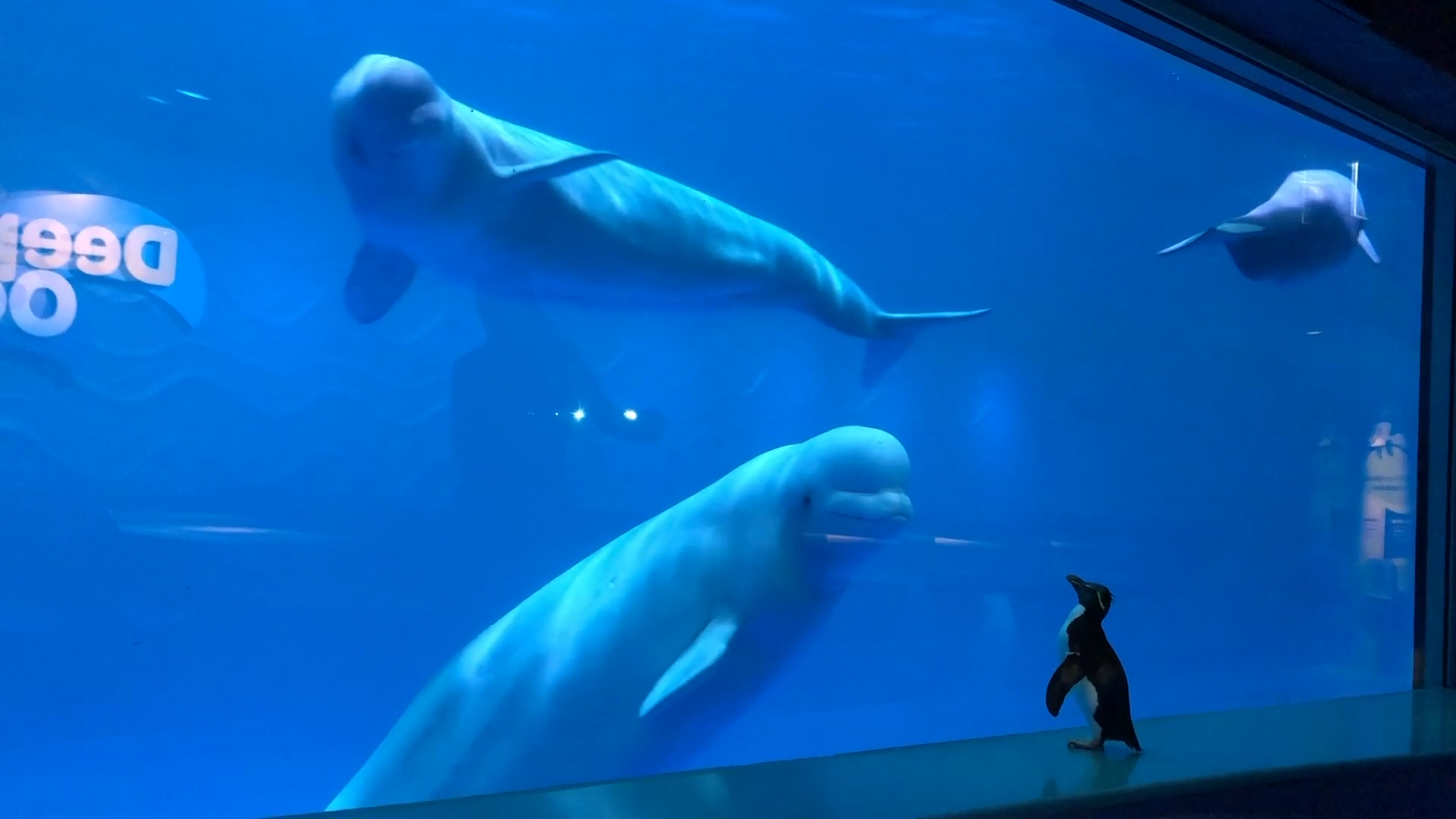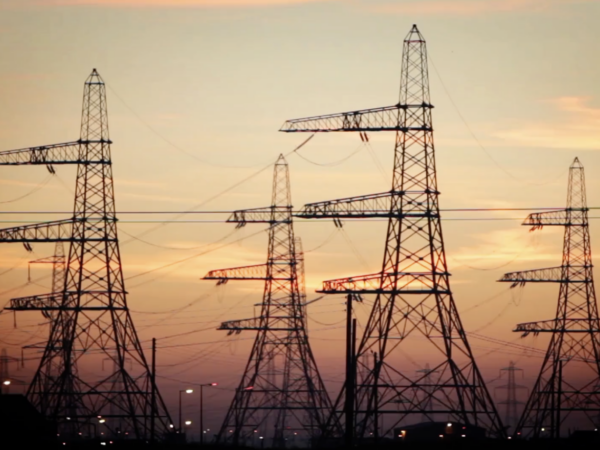
Chicago’s Shedd Aquarium is one of the more popular, well-known aquariums around the country with 2 million visitors every year.
But the COVID-19 pandemic has closed it to the public, which is a big change for the penguins, whales, fish and other creatures that live in the Shedd’s various habitats.
“All the animals notice the lack of the public,” said Eve Barrs, senior aquarist at the aquarium.
Aquarium staff have had to adjust routines to keep the animals from getting lonely, doing anything from dancing to playing peek-a-boo to pretending to be a visitor and taking selfies.
Catch Great Lakes Now’s segment and visit three Great Lakes aquariums during lockdown:
API key not valid. Please pass a valid API key.Great Lakes Now producer Danielle Dabney had a conversation with Barrs. The transcript has been slightly edited for clarity and length.
Great Lakes Now: The animals, the penguins, the belugas and the otters. What is a typical day like for them?
Eve Barrs: I think our typical days at Shedd vary a little bit by design. Welfare is a big part of what we focus on, on the husbandry side of things. And so changing up our routine for the benefit of the animals was something that we really focused on. All of our animals, if they are on a public display, are interacting with the guests to some level.
GLN: Did you get the sense that they enjoy that human interaction?
EB: Yeah. Our animals here at Shedd are really used to human interaction, and for some of our animals that are a little more shy we provide habitat that accounts for that so they can hide. They can choose. All of our animals have a choice. And that’s part of my job as an aquarist is to provide choice for these animals so that in their habitat where they’re living, they are comfortable to be out and seek the attention of our guests or take a break and go back behind where they can’t be seen.
But they rotated through. This was a part of our daily life. It’s what it’s all about. It’s how people can really become connected with nature and connected with these fish. Especially animals who live under the water are hard to view, even if you frequently go on nature walks. You can observe terrestrial animals, things that are above the water and in our airspace with us if you go for a walk. But it’s hard to observe fish. So that’s where we come in. We can show you what that underwater world looks like and the day-to-day things that our animals that live under the water are doing.
GLN: Did you get the sense that some of the larger social animals knew that something was different?
EB: Definitely since the shutdown we have been observing and monitoring and recording behavioral changes. So far, we haven’t assessed any that are for better or for worse. But definitely all the animals notice the lack of the public. Public is such a focus here at Shedd Aquarium and our animals really rely on them for their daily enrichment, for interaction. And it’s just such a constant thing, such a normal part of their world, that we definitely saw some changes in behavior. So that’s when we step in and we start implementing changes on our side to help those animals through that for the animals’ own welfare.
GLN: What were some of those behavioral changes?
EB: Some fish might at different times of the day ignore someone or seemingly ignore someone who is walking past to view them, but they are in a feeding behavior, they’re in resting behavior and that behavior is not going to necessarily change when you walk past. But now so few people are walking past that if we go through our observations, you’ll see, for instance, the walleye in the Great Lakes Gallery will come rushing to the window just to see who’s there today. Several other species who might previously have ignored you are now coming. They’re curious. They’re checking out to see who’s there, to see what this movement is, because there’s such a lack of public for these animals, for all the animals.
We are working together for those of us who are still in the building to do regular rounds to look at specific animals. And so we’ll highlight certain animals on certain days to say ‘Everybody go past this exhibit’ or ‘Everybody touch this animal’ or ‘Everybody do something different in front of this exhibit for the animal’s benefit.’ So it’s been really fun and interesting to get really creative about how to handle this in the absence of public and volunteers.
GLN: Do you think that once you do reopen, it’ll be kind of like a reverse shock for them?
EB: I think once we open our doors, our animals will definitely notice, but we will also be mindful of how we do that. We had a plan for the beginning of the shutdown and so on, and we will have a plan for reopening. So our animals will notice but I don’t think there will be stress from it. I think they’ll be looking forward to it. We know the penguins miss everybody, so they will be waiting to see their fan club come back in through our doors.
Another animal that I should mention is our giant Pacific octopus. His name is Bowie. And we’ve noticed a big behavioral change, not in the first weeks, but ramping up a little bit. He was lingering at some of our enrichment sessions and things like that and really seeking some more attention. And he’s got quite the attitude. So sometimes we’ll see a lot of water spray, which is a natural behavior for them. We see that during our interactions with him, while we’re feeding him or cleaning the habitat. They were a little more frequent. So we eventually sent out another one of those roaming requests to let everybody know to stop by on the public side, just like our guests would do, just like our volunteers would be doing, and take a selfie with the octopus or look at him, take a photo, walk past the exhibit a couple of times, do some dance moves, anything to kind of entertain the animal from the public side because we’re lacking that right now.
It’s really fun. We stagger. We always socially distance. We’re always wearing our masks. But in our breaks or even taking lunch at different spots throughout the day, because without public, I might go eat my lunch in front of the octopus, which normally isn’t setup for that. We can all rotate through the octopus and the penguins and some of the other animals that are a little more social to get that interaction out there. It’s been really interesting.
Great Lakes Now producer Danielle Dabney did the reporting for this piece.
Catch up with more stories from Great Lakes Now:
Inside Entertainment: COVID-19 has Great Lakes aquariums and museums offering online activities
Sewage Check: Great Lakes researchers look to wastewater for data on COVID-19
Huge Interest: Aquatarium finds its feet during COVID-19 with virtual engagement
COVID-19 Connection: Pandemic provides an opportunity for fish and insects to bond
Featured image: A penguin watches the beluga whales at Shedd Aquarium. (Great Lakes Now Episode 1014)




